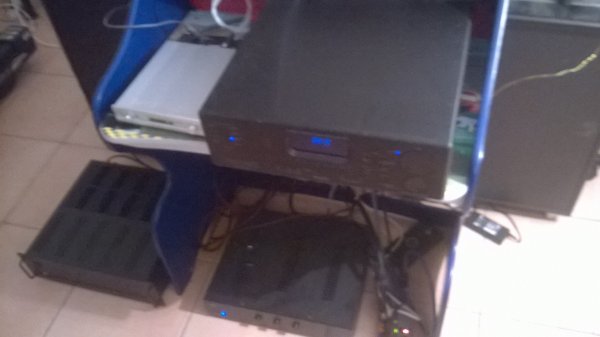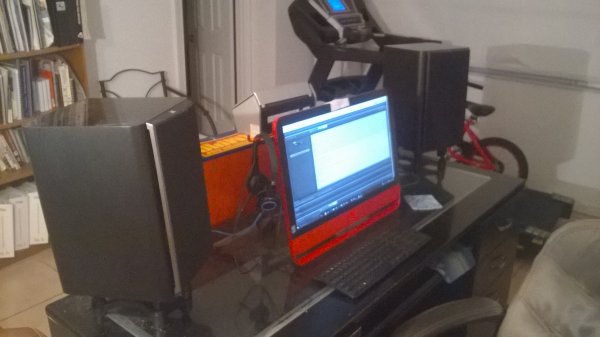The problem I see here is that in the performance venue the reflections come from certain directions, with certain delays and levels, reverberation comes from all over the place. Once you record all this and play the recording through 2-channel stereo, all of the above comes from the same direction, i.e. the loudspeaker, so all of the directional cues are lost. The original apparent source width is gone and listener envelopment is no longer present. Forward firing loudspeaker radiate sound in a very different manner as compared to real musical instruments, so there’s another bunch of directional cues that’s gone.
Does the listening rooms add unnecessary reflections? Unnecessary implicitly means disturbing, yet I could no find any evidence at all in the technical/scientific literature that in a 2-channel setup, when playing music, reflections are disturbing as a matter of principle, i.e. in each and every case. Absolute perception thresholds of reflections have been determined, which means that a change has been noticed, either in timbre or soundstage. So yes, reflections at or above perception thresholds do disturb. However, the respective research has examined only single reflections, not the whole set of reflections from walls, floor and ceiling. The respective research has used a single loudspeaker as source for direct sound, not 2-channel setups. The perception threshold for a single lateral reflection when playing music through a single loudspeaker in an anechoic chamber is known, but what is the threshold of the pair of right/left wall reflections in a small listening room with the full set of reflections and reverberation?
As for the question asked in the opening post, in my view it would necessary to first determine which elements of the sound field are responsible for soundstage and 3-dimensionality and to then look at what influence, if any, the different components of the 2-channel system have on those elements.
Klaus
Hi Klaus,
I have read your post with great interest very early this morning. You bring important points that some professional mastering recording music engineers with an acoustic science education background would have a better grasp than most people.
The first post of this thread mentioned a 360° mechanical/electrical sound reproducer; the MBL 101 X-Treme loudspeaker system. And the OP's experience was the most 3-dimensional sound he has ever experienced in his life. That 360° dispersion is the main contributor for that 3D holographic sound illusion, plus the integrated room acoustics with it.
He asked us what we think contributes the most to that 3D effect.
I replied with few options; one being the recording itself...2-channel stereo recording. ...But the example I supplied used QSound. And there is also Ambisonic recordings.
Now, if say we take a classical music recording from Prof. Keith O. Johnson of the Reference Recordings music record label...stereo on CD, with the ambiance of the concert hall recorded on his master, and play it in our acoustically treated room; the clues (ambiance hall) coming from the front soundstage will be perceived by our brain, and distributed in our room around our ears. Sound do travel and envelop us, and that sound, even coming from directly in front of us, do travel on the speaker side walls, behind, and bouncing off from any reflective surfaces...side walls, ceiling, floor, front and back walls. The off-axis dispersion if close to the on-axis one (say up to 75-90°) will contribute to the 3D imaging, holographic sound. The electrical phase also plays an important role on that aspect...coherence of all sounds arrival. ...The tuning port, the x-over slopes, the frequencies chosen.
And that hall ambiance recorded on the recording will transmit well into our brain as if we were in that hall. ...Natural ambiance, no processing, no DSP, no mixing control effect of any sort. ...And no loss of dynamics and harmonics. That would be a quality music recording executed by only the best music recording engineers in the business.
There is no escaping on the importance of a balanced room's acoustics. ...First, secondary reflections.
...And the bass, the frequencies @ which the room axial modes are excited and suppressed. Depending of the room's dimensions, it can roughly vary from say 10Hz to 200Hz.
I don't know how exactly they balance the bass towers from the MBL 101 X-Treme system; but I'm sure it has to do with judicial positioning, measurements, and probably parametric equalization @ the very least.
I am not an expert, just interested in the best 3D illusion from stereo music recordings.
Also, a full classical orchestral music recording is impossible to recreate @ realistic live levels...classical chamber music, small acoustic jazz ensemble are more feasible for our limited speaker's systems in our rooms...even from larger ones...full range. A full orchestra with 121 musicians recorded on a LP album...I have never heard one that can do justice. ...Better on CD or SACD for that...IMO and experience. And multichannel is a great 3D alternative. Say 5.1-channels all discrete channels and all hi-res audio...each one of them.
On the other hand, a cold and clinical studio music recording will live or die from the mixing console @ the expertise of its mixing operator's hands (recording engineer).
It is not natural.
It is my profound belief that each music recording, even each song from the same album has its own matching audio gear's set of adjustments. I believe in the precise correct master volume level of our preamp for each music recording in our room's dimension.
Furthermore, I believe in speakers better matched for some specific music recordings. And I already know that most (majority) of readers here will disagree with me, and that's fine as we live among an intelligent group of people who respect democracy, free expression, and with an open mind towards unknown discoveries. ...Out of the conventional.
There are many types of 3-dimensionality from the sounds of music in our homes. Many systems optimized in the rooms will give more or less some of those variances.
But the music recordings always remain number one in that overall best 3D illusion, quality recordings done expertly/intelligently by only the best experience music recording engineers. Justin Bieber, Taylor Swift, ...needs no applying here...this is flat MP3 territory for the initiated by the mega recording studio monster companies...money, profits, revenues...none to do with the music passion and quality calm for the intellect of a man and woman.
* When I read a professional review from an audio reviewer, I want to know the music recordings he is using to base his review on...most importantly for me.
That way I can be familiar, and if not I discover new music I need to get. That matters first. The sound is coming from those music recordings; that's the main essence, the number one sources.
We can explore in great depth what your post contains above; this is just one very small approach to it I'm sharing. I'm wide open to it all.
Very true that in a live concert hall the sounds are coming from various directions, and not two halls are exactly sounding the same.
As in speakers, we have our own preference for the halls we like more...the ones that give us the best spatial envelopment, 3D immersion in the music.








